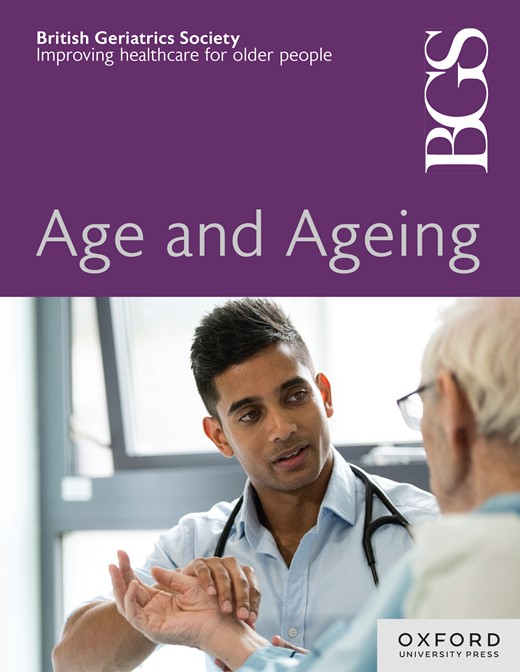Longitudinal trajectories of polypharmacy in older people, and their association with the risk of mortality: a joint latent class model analysis of real-world data from the UK and the Netherlands
IF 7.1
2区 医学
Q1 GERIATRICS & GERONTOLOGY
引用次数: 0
Abstract
Objective Polypharmacy is the use of multiple drugs. Many definitions have been established for polypharmacy, often cross-sectionally, despite it naturally changing over time. In this study, we aimed to identify clusters of older people with distinct polypharmacy trajectories over time and associated mortality risks. We then characterised the identified clusters and assessed their generalisability in two external databases. Methods Data were extracted from three primary care databases: the UK Clinical Practice Research Datalink (CPRD) GOLD, CPRD Aurum and the Dutch Integrated Primary Care Information (IPCI). People aged ≥65 on 1 January 2015 were included. Polypharmacy, defined as the cumulative number of prescribed ingredients, was calculated at baseline and at the end of each subsequent follow-up year (2015–19). We applied joint latent class modelling, which divides the population into clusters with different trajectories and associated mortality risks. The model was trained in GOLD and validated in Aurum and IPCI. Results Four clusters were identified and characterised based on polypharmacy baseline and rate of progression: low-steady, intermediate-slow/increasing, intermediate-fast/increasing and high-decreasing. The high-decreasing cluster had the highest average baseline polypharmacy (intercept = 23.4) and prevalence of non-cancer chronic comorbidities, whilst the intermediate-fast/increasing had the steepest polypharmacy rate of progression per year (slope = 6.4), highest baseline and cumulative incidence of cancer, and worst survival outcome. Good validation was found in Aurum and IPCI. Conclusion High baseline levels and increasing levels of polypharmacy were associated with an increased mortality risk in older people. The clusters identified in this study were externally validated in two European databases, confirming their robustness and generalisability.老年人多重用药的纵向轨迹及其与死亡风险的关联:英国和荷兰真实世界数据的联合潜在类别模型分析
目的综合用药是指多种药物的使用。尽管随着时间的推移它会自然地发生变化,但已经建立了许多关于多药的定义,通常是横断面的。在这项研究中,我们的目的是确定老年人群体随着时间的推移具有不同的多药轨迹和相关的死亡风险。然后,我们对识别的集群进行了表征,并在两个外部数据库中评估了它们的普遍性。方法从三个初级保健数据库中提取数据:英国临床实践研究数据链(CPRD) GOLD、CPRD Aurum和荷兰综合初级保健信息(IPCI)。纳入2015年1月1日年龄≥65岁的人群。多药,定义为处方成分的累积数量,在基线和随后的每个随访年(2015-19)结束时计算。我们应用了联合潜在类别模型,该模型将人群划分为具有不同轨迹和相关死亡风险的群集。模型在GOLD中训练,在Aurum和IPCI中验证。结果根据多药基线和进展速度,鉴定出低稳定、中慢/增加、中快/增加和高下降4个聚类。高下降组的平均基线多药性(截距= 23.4)和非癌症慢性合共病患病率最高,而中速/增加组的年多药性进展率最高(斜率= 6.4),基线和累积癌症发病率最高,生存结局最差。在Aurum和IPCI中得到了很好的验证。结论高基线水平和不断增加的多药水平与老年人死亡风险增加有关。本研究中确定的聚类在两个欧洲数据库中进行了外部验证,证实了它们的稳健性和普遍性。
本文章由计算机程序翻译,如有差异,请以英文原文为准。
求助全文
约1分钟内获得全文
求助全文
来源期刊

Age and ageing
医学-老年医学
CiteScore
9.20
自引率
6.00%
发文量
796
审稿时长
4-8 weeks
期刊介绍:
Age and Ageing is an international journal publishing refereed original articles and commissioned reviews on geriatric medicine and gerontology. Its range includes research on ageing and clinical, epidemiological, and psychological aspects of later life.
 求助内容:
求助内容: 应助结果提醒方式:
应助结果提醒方式:


